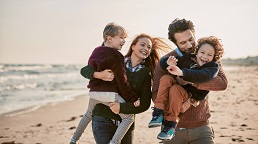Prostatic Artery Embolization
Prostatic artery embolization (PAE) is a minimally invasive treatment for an enlarged prostate, also called benign prostatic hyperplasia (BPH), the most common benign tumor found in men.
Symptoms
As the prostate grows larger, it can constrict the urethra and cause lower urinary tract symptoms such as:
- Urinary incontinence, ranging from some leaking to complete loss of control
- Intermittent voiding, hesitancy or straining
- Increased urinary frequency and urgency
- Pain with urination
Candidates for prostatic artery embolization
This procedure is best for men who:
- Have an enlarged prostate
- Are unable to manage BPH with medication
- Have urinary symptoms like waking up multiple times a night or going frequently throughout the day
- Can't go more than an hour without needing to urinate
- Are either ineligible or not interested in traditional surgery
Pre-procedure evaluation
If you are a candidate for the procedure, an interventional radiologist will conduct an evaluation, which may include:
- Urine test
- Prostate-specific antigen (PSA) test
- MRI or ultrasound of the prostate gland
What is prostatic artery embolization?
A tiny catheter is inserted into the artery in your wrist or groin and guided into the vessels that supply blood to the prostate. Once the catheter is in place, dye is injected to map the blood vessels that feed the prostate.
Next FDA-approved embolization spheres are injected through the catheter into the blood vessels to reduce blood supply to the prostate.
After the procedure, the prostate will shrink. Symptoms usually improve within a few weeks to a few months after the procedure.
Benefits
Prostatic artery embolization offers several benefits over surgical procedures, including:
- Shorter recovery time
- Low risk of sexual side effects
- Low risk of urinary incontinence
- Decreased discomfort
Risks
Patients may experience some pain and discomfort for a few days after the procedure. Most effects are mild, and in most cases, no hospital stay is required. The risks are also lower than surgery. Symptoms may include:
- Nausea
- Vomiting
- Fever
- Pelvic pain
- Painful or frequent urination
Other potential risks:
- Hematoma at the incision site
- Blood in the urine, semen or stool
- Bladder spasm
- Infection of the puncture site or prostate
To learn more about prostatic artery embolization, call 833-456-2788 or request an appointment online.








